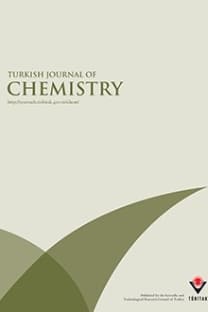Production of Bacterial Polyesters from Some Various New Substrates by Alcaligenes eutrophus and Pseudomonas oleovorans
Poly(3-hydroxy alkanoate)s (PHA)s are bacterial polyesters that have, due to their biodegradability and biocompatibility, attracted considerable industrial interest. All the substrates used in feeding Alcaligenes eutrophus and Pseudomonas oleovorans have been reviewed as far as we know, and some more new substrates or mixtures have been used in PHA production by microorganisms. Alcaligenes eutrophus was fed with 4-pentenoic acid, 2-hydroxy ethyl methacrylate (HEMA), corn oil acids, linseed oil acids and limonene as well as mixtures of acetic acid and glucose or lactose. Either HEMA as a sole carbon source or the mixture of glucose did not produce polyester; limonene as a sole carbon source gave few dry cells and very few mgl-1 Poly (3-hydroxy butyrate-co-3-hydroxy valerate)(PHBV) containing 5 mol-% of hydroxy valerate (HV) units. Poly(3-hydroxy butyrate), (PHB), was obtained from corn oil acids and the mixture of glucose (15 gl-1) and acetic acid (2.5 gl-1); Poly (3-hydroxy butyrate-co-3-hydroxy valerate) (PHBV) was obtained in moderate yield from 4-pentenoic acid as a sole carbon source and the rest of the substrates above. Pseudomonas oleovorans was fed with linoleic acid, laurel seed oil acids, corn oil acids, laurel leaf oil, rose oil and limonene. Medium chain length polyesters were obtained from linoleic acid, corn oil acids and laurel seed oil acids, but the others did not give any detectable polyester. The polymers obtained were characterized by size exclusion chromatography, 1H and 13C NMR, FT-IR, thermal analysis and fast atom bombardment-mass spectrometer techniques.
Production of Bacterial Polyesters from Some Various New Substrates by Alcaligenes eutrophus and Pseudomonas oleovorans
Poly(3-hydroxy alkanoate)s (PHA)s are bacterial polyesters that have, due to their biodegradability and biocompatibility, attracted considerable industrial interest. All the substrates used in feeding Alcaligenes eutrophus and Pseudomonas oleovorans have been reviewed as far as we know, and some more new substrates or mixtures have been used in PHA production by microorganisms. Alcaligenes eutrophus was fed with 4-pentenoic acid, 2-hydroxy ethyl methacrylate (HEMA), corn oil acids, linseed oil acids and limonene as well as mixtures of acetic acid and glucose or lactose. Either HEMA as a sole carbon source or the mixture of glucose did not produce polyester; limonene as a sole carbon source gave few dry cells and very few mgl-1 Poly (3-hydroxy butyrate-co-3-hydroxy valerate)(PHBV) containing 5 mol-% of hydroxy valerate (HV) units. Poly(3-hydroxy butyrate), (PHB), was obtained from corn oil acids and the mixture of glucose (15 gl-1) and acetic acid (2.5 gl-1); Poly (3-hydroxy butyrate-co-3-hydroxy valerate) (PHBV) was obtained in moderate yield from 4-pentenoic acid as a sole carbon source and the rest of the substrates above. Pseudomonas oleovorans was fed with linoleic acid, laurel seed oil acids, corn oil acids, laurel leaf oil, rose oil and limonene. Medium chain length polyesters were obtained from linoleic acid, corn oil acids and laurel seed oil acids, but the others did not give any detectable polyester. The polymers obtained were characterized by size exclusion chromatography, 1H and 13C NMR, FT-IR, thermal analysis and fast atom bombardment-mass spectrometer techniques.
